In recent years, the agricultural landscape has witnessed a remarkable transformation driven by technological advancements. Among the most notable innovations are agricultural drones. These high-flying devices are changing the way farmers operate, bringing unprecedented efficiency and precision to crop management. In this article, we will take you on a journey through the agricultural revolution by exploring 10 types of drones that are transforming farming practices.
Read, Also >>>>>> A Step-by-Step Guide On How To Boost Your Crop Yields with Drone Spraying
1. Fixed-Wing Drones
Technology has become an indispensable ally for farmers seeking greater efficiency, productivity, and sustainability. One of the most innovative tools in this technological arsenal is the fixed-wing drone. These unmanned aerial vehicles (UAVs) resemble miniature airplanes and are playing a pivotal role in transforming farming practices across the globe.
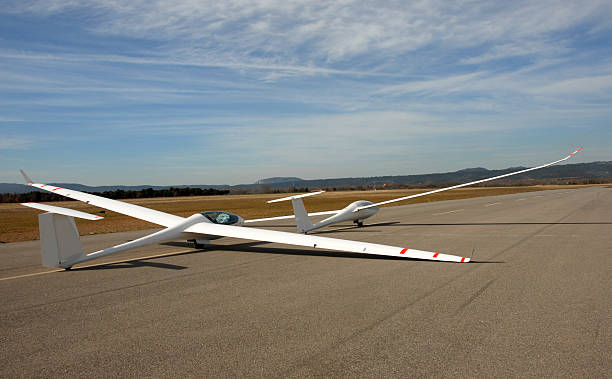
How Fixed-Wing Drones Work
Fixed-wing drones are designed for endurance and efficiency. Unlike their multirotor counterparts, which rely on multiple spinning rotors for lift and stability, fixed-wing drones have a more traditional airplane-like design. They have a set of fixed wings and a single propeller, which propels them forward.
The unique advantage of fixed-wing drones lies in their ability to cover large areas swiftly and efficiently. They can stay airborne for extended periods, making them ideal for mapping vast expanses of farmland and monitoring crop health over larger territories.
Applications in Agriculture
- Aerial Mapping and Surveying: One of the primary roles of fixed-wing drones in agriculture is creating accurate maps of fields and farmlands. Equipped with advanced cameras and sensors, these drones capture high-resolution images and collect data that can be used to generate detailed maps. This data helps farmers gain insights into the topography of their land, which is invaluable for optimizing irrigation, drainage, and crop placement.
- Crop Health Monitoring: Fixed-wing drones are equipped with specialized sensors, including multispectral and hyperspectral cameras, which can detect variations in crop health that are invisible to the human eye. By analyzing the reflected light from crops, these drones can identify stressed or diseased plants early on, allowing farmers to take corrective measures promptly.
- Irrigation Management: Efficient water use is crucial for modern farming. Fixed-wing drones can provide thermal imagery of fields, helping farmers assess the effectiveness of their irrigation systems. Hotspots in the images can indicate areas where water distribution is insufficient or uneven, enabling farmers to optimize their irrigation strategies.
- Pest and Disease Detection: Identifying pest infestations and diseases in crops is a constant challenge for farmers. Fixed-wing drones equipped with thermal cameras can detect temperature anomalies caused by pests or diseases, enabling farmers to pinpoint affected areas and implement targeted treatments, reducing the need for widespread chemical application.
- Yield Prediction: By regularly surveying fields and collecting data on crop growth and health, fixed-wing drones contribute to accurate yield prediction. This information is invaluable for crop planning, resource allocation, and predicting market supply.
Advantages of Fixed-Wing Drones in Agriculture
- Efficiency: Fixed-wing drones cover more ground in less time compared to their multirotor counterparts, making them ideal for large farms.
- Endurance: They have longer flight times, which means they can survey larger areas without frequent battery swaps.
- Cost-Effective: In the long run, fixed-wing drones can be more cost-effective due to their efficiency and endurance.
- High-Quality Data: The cameras and sensors on fixed-wing drones capture high-resolution data, providing farmers with detailed and actionable insights.
Fixed-wing drones are a testament to the incredible technological advancements in agriculture. Their endurance, efficiency, and data-capturing capabilities have made them invaluable tools for modern farmers. As the agricultural industry continues to embrace innovation, fixed-wing drones will undoubtedly play an even more prominent role in shaping the future of farming, offering sustainable solutions and greater yields to meet the world’s growing food demands. These flying marvels are a testament to how technology is taking agriculture to new heights, quite literally.
2. Multirotor Drones
Innovation has become the driving force behind increased efficiency, sustainability, and productivity in the agricultural industry. Among the technological marvels transforming the way we farm, multirotor drones stand out as versatile aerial workhorses, offering a range of applications that are revolutionizing the industry.

How Multirotor Drones Work
Multirotor drones, often referred to as quadcopters or hexacopters depending on the number of rotors they have, operate on a fundamentally different principle than fixed-wing drones. Instead of relying on fixed wings for lift, multirotor drones use multiple spinning rotors to generate lift and control their flight.
The design of multirotor drones provides exceptional stability and maneuverability, making them ideal for close-range operations and precise tasks in the agricultural sector.
Applications in Agriculture
- Crop Monitoring: Multirotor drones equipped with high-resolution cameras and sensors are employed for regular crop monitoring. They capture detailed images and data that help farmers assess crop health, identify stress factors, and make informed decisions regarding irrigation, pest control, and nutrient application.
- Precision Spraying: These drones are utilized for precise pesticide and fertilizer application. By deploying multirotor drones, farmers can target specific areas of their fields, reducing chemical wastage and environmental impact while optimizing crop health.
- Damage Assessment: After natural disasters or severe weather events, multirotor drones can quickly assess the extent of damage to crops and infrastructure, enabling rapid response and recovery efforts.
- Weed Management: Multirotor drones equipped with cameras and artificial intelligence can identify and locate weeds in fields. This information aids in planning and executing targeted weed control measures.
- Pollination Assistance: In some cases, multirotor drones have been explored for pollination assistance, especially in situations where natural pollinators are scarce. While this application is in its early stages, it showcases the adaptability of these drones in agriculture.
- Livestock Management: Farmers also utilize multirotor drones to monitor livestock. These drones can provide a bird’s-eye view of herds, allowing farmers to track their movements, identify sick or injured animals, and ensure the overall well-being of their livestock.
Advantages of Multirotor Drones in Agriculture
- Maneuverability: Multirotor drones excel in navigating tight spaces and challenging terrain, making them suitable for precision tasks in agriculture.
- Quick Deployment: They can be deployed rapidly, providing timely data and assistance when needed.
- Versatility: Multirotor drones can perform a wide range of tasks, from crop monitoring to livestock management, making them versatile tools for farmers.
- Real-time Data: The data collected by multirotor drones is often available in real time, allowing farmers to make immediate decisions based on up-to-the-minute information.
Multirotor drones have firmly established themselves as indispensable tools in modern agriculture. Their agility, versatility, and ability to capture high-resolution data are revolutionizing the way farmers manage their crops and livestock. As agriculture continues to evolve, multirotor drones will undoubtedly play a pivotal role in increasing efficiency, sustainability, and overall productivity in the industry. These aerial workhorses have become a symbol of the ongoing agricultural revolution, where technology meets tradition to feed a growing world population.
3. Hybrid Drones
Hybrid Drones: Bridging the Agricultural Divide from Sky to Ground
As agriculture continues to develop, new and exciting innovations are emerging, particularly in the realm of farming techniques. One such innovation that has recently taken the industry by storm is the hybrid drone. These drones have revolutionized the way farmers cultivate their crops by seamlessly integrating the capabilities of both fixed-wing and multirotor drones. With their exceptional efficiency, accuracy, and flexibility, these aerial machines are making a significant impact on modern agriculture.

How Hybrid Drones Work
Hybrid drones, as the name suggests, blend the best of two drone worlds: the efficiency and endurance of fixed-wing drones and the maneuverability of multirotor drones. They are designed to take off vertically like multirotor drones and then transition to horizontal flight to cover large areas efficiently.
This unique design allows hybrid drones to adapt to different tasks and terrains, making them invaluable tools in modern agriculture.
Applications in Agriculture
- Large-Scale Field Mapping: Hybrid drones excel at large-scale field mapping, thanks to their ability to cover extensive areas efficiently. They capture high-resolution images and data that help farmers create detailed maps for precision agriculture, land analysis, and crop planning.
- Crop Monitoring: Hybrid drones equipped with advanced sensors and cameras provide a bird’s-eye view of crop health. They detect stress factors, assess irrigation needs, and enable farmers to take timely actions to optimize yields.
- Precision Spraying: The versatility of hybrid drones is particularly advantageous when it comes to precise pesticide and fertilizer application. Farmers can target specific areas, reducing chemical wastage and environmental impact while ensuring healthier crops.
- Emergency Response: In cases of natural disasters or incidents requiring rapid aerial assessment, hybrid drones can swiftly reach affected areas. They provide real-time data to aid in disaster response and recovery efforts.
- Terrain Exploration: For farms with varying topography, hybrid drones are ideal for terrain exploration and analysis. They can access hard-to-reach or steep areas, providing valuable insights for land management.
- Infrastructure Inspection: Beyond crop-related tasks, hybrid drones are used for inspecting farm infrastructure such as irrigation systems, barns, and fences. They identify maintenance needs and ensure farm facilities are in optimal condition.
Advantages of Hybrid Drones in Agriculture
- Adaptability: Hybrid drones seamlessly switch between vertical and horizontal flight, adapting to different agricultural tasks and terrains.
- Efficiency: They combine the endurance of fixed-wing drones with the maneuverability of multirotor drones, making them efficient tools for large-scale operations.
- Precision: Hybrid drones enable precise data collection and targeted treatments, reducing resource wastage and improving overall crop health.
- Quick Deployment: They can be rapidly deployed to gather critical data or respond to emergencies on the farm.
Hybrid drones are ushering in a new era of efficiency and versatility in modern agriculture. Their unique design and capabilities bridge the gap between fixed-wing and multirotor drones, making them indispensable tools for farmers seeking precision, adaptability, and productivity. As the agricultural landscape continues to evolve, hybrid drones will play an increasingly pivotal role in helping farmers navigate the challenges of feeding a growing global population while ensuring sustainability and environmental responsibility. These hybrid aerial marvels are a testament to the ongoing agricultural revolution, where innovation knows no bounds.
4. Spraying Drones
Spraying Drones: Precision Farming Takes Flight
The field of agriculture is continually changing, and technology is a crucial factor in transforming conventional farming practices. Recently, one of the most significant breakthroughs is the implementation of spraying drones. These flying machines are transforming precision agriculture by enabling farmers to apply fertilizers, herbicides, and pesticides with unparalleled precision. This approach not only minimizes waste but also improves crop health.
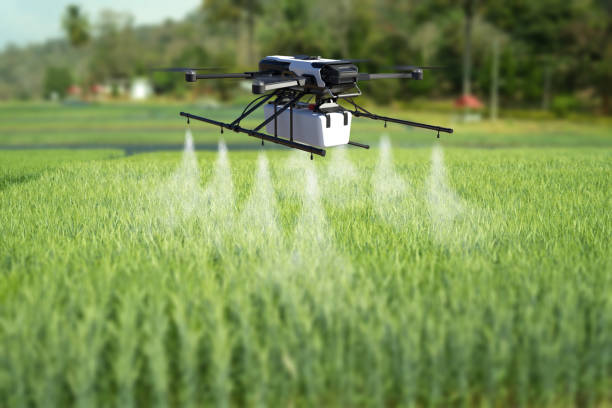
How Spraying Drones Work
Spraying drones, also known as agricultural or crop-dusting drones, are designed to carry specialized equipment for precise liquid or granular substance application. They are equipped with a tank for the substance, a pump, and a sprayer nozzle. The drone’s flight path is carefully programmed, ensuring even distribution of the material over the target area.
These drones are capable of flying at low altitudes, getting as close to the crops as necessary for optimal coverage. This level of precision sets them apart from traditional ground-based spraying methods.
Applications in Agriculture
- Pesticide and Herbicide Application: Spraying drones are used to apply pesticides and herbicides with precision. By targeting specific areas of a field or crop, farmers reduce chemical usage, minimize environmental impact, and avoid unnecessary exposure to humans.
- Fertilizer Application: The ability to precisely apply fertilizers where they are needed most enhances nutrient management in farming. This helps improve crop yields while reducing the overall use of fertilizers.
- Weed Control: Spraying drones can be programmed to target weed-infested areas, allowing farmers to manage weed growth without affecting the health of their crops.
- Disease Management: In cases of crop diseases, spraying drones can deliver targeted treatments, minimizing the spread of infections and preserving crop health.
- Precision Irrigation: Some spraying drones can be equipped with equipment for precise irrigation, helping farmers optimize water usage by delivering water directly to the root zones of plants.
Advantages of Spraying Drones in Agriculture
- Precision: Spraying drones offer unparalleled accuracy, reducing chemical wastage and minimizing the impact on non-target areas.
- Efficiency: They can cover large areas quickly, reducing the time and manpower required for traditional spraying methods.
- Safety: By eliminating or reducing the need for humans to handle chemicals directly, spraying drones enhance safety for both farmers and the environment.
- Cost-Effective: Over time, the efficiency and precision of spraying drones can lead to cost savings for farmers.
Spraying drones has become integral to modern precision agriculture. Their ability to precisely apply pesticides, herbicides, and fertilizers offers a level of accuracy that was previously unimaginable. By reducing chemical usage, minimizing environmental impact, and optimizing resource allocation, spraying drones are helping farmers produce healthier crops while contributing to more sustainable and responsible farming practices. As technology continues to advance, these aerial marvels are poised to play an increasingly significant role in the ongoing agricultural revolution, where precision and efficiency are the keys to a more productive and sustainable future.
5. Mapping and Surveying Drones
Mapping and Surveying Drones: A Bird’s-Eye View of Precision Agriculture
Technology has become a crucial partner for farmers in the contemporary agricultural scene. The farmers aim to enhance productivity, optimize resource utilization, and promote sustainable practices. Among the most revolutionary inventions in this sector are mapping and surveying drones. These devices at high altitudes provide a unique viewpoint and capture meticulous aerial information that equips farmers with vital insights for effective land management and crop cultivation.
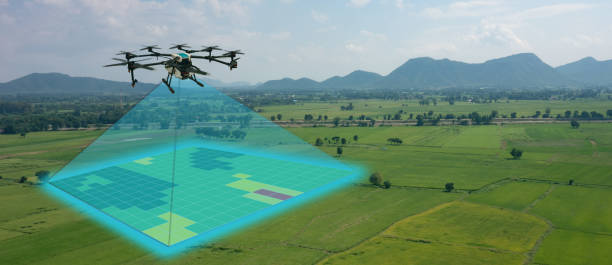
How Mapping and Surveying Drones Work
Mapping and surveying drones, often equipped with advanced cameras and sensors, are designed to capture high-resolution images and data from the sky. They follow predetermined flight paths over fields, capturing images and measurements as they go. This data is then processed to create detailed maps, 3D models, and valuable insights for farmers.
Applications in Agriculture
- Field Mapping: These drones are used to create highly accurate maps of farmland. The maps provide essential information about topography, drainage patterns, and soil composition, helping farmers make informed decisions about planting, irrigation, and drainage.
- Contour Mapping: Contour maps created by mapping and surveying drones help farmers identify slopes and elevation changes in their fields. This information aids in optimizing irrigation and minimizing soil erosion.
- Topographic Modeling: Drones can generate topographic models that display elevation variations across a field. This data is valuable for planning land grading, terracing, and other land management activities.
- Crop Health Assessment: These drones capture multispectral or hyperspectral images, allowing farmers to assess crop health. They can detect stress factors, nutrient deficiencies, and pest infestations early, enabling targeted interventions.
- Yield Prediction: By monitoring crop growth and health throughout the season, mapping drones contribute to accurate yield predictions. This information helps farmers plan for harvesting, storage, and marketing.
- Irrigation Management: Detailed maps created by drones assist in designing efficient irrigation systems. Farmers can identify areas with water stress or over-irrigation, ensuring optimal water use.
Advantages of Mapping and Surveying Drones in Agriculture
- Precision: These drones provide highly accurate and detailed data, enabling precise decision-making in agriculture.
- Efficiency: They can cover large areas quickly, reducing the time and resources required for traditional land surveying.
- Data-Driven Farming: The data collected by mapping and surveying drones empowers farmers to make data-driven decisions, optimizing crop management and resource allocation.
- Sustainability: By facilitating precise land management, these drones contribute to more sustainable farming practices.
Mapping and surveying drones are revolutionizing agriculture by providing farmers with a bird’s-eye view of their fields and invaluable data for precision farming. From creating detailed maps and models to monitoring crop health and optimizing irrigation, these aerial devices are indispensable tools for modern agriculture. As technology continues to advance, mapping and surveying drones will play an increasingly significant role in ensuring efficient land use, maximizing crop yields, and promoting sustainable and responsible farming practices. They represent a key element of the ongoing agricultural revolution, where precision and data are the cornerstones of future success.
6. Thermal Imaging Drones
Thermal Imaging Drones: Illuminating the Unseen in Agriculture
Agriculture is an industry that is always evolving, and technology is proving to be a critical factor in shaping its future. One of the recent technological advancements in farming is the application of thermal imaging drones. These drones soar high above the fields and capture thermal data, which offers farmers a distinctive perspective of their crops. The data obtained enables farmers to detect temperature variations in their crops and spot any areas of strain. By utilizing this information, farmers can make informed decisions to enhance crop health and yields.
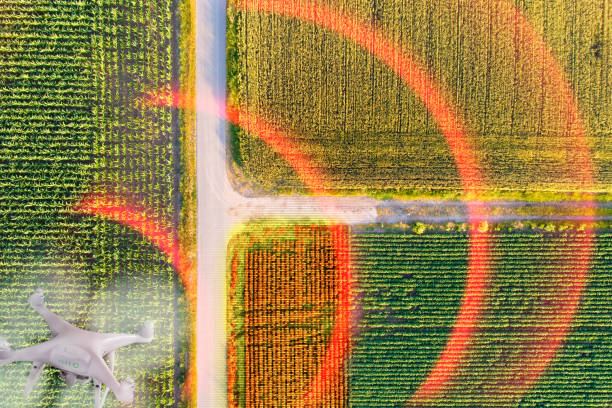
How Thermal Imaging Drones Work
Thermal imaging drones are equipped with specialized thermal cameras that detect and capture infrared radiation emitted by objects and surfaces. This technology converts temperature differences into visible images, enabling farmers to identify variations in temperature that may be indicative of specific conditions in their fields.
Applications in Agriculture
- Crop Health Monitoring: Thermal imaging drones provide a thermal perspective on crop health. Healthy plants typically have consistent temperatures, while stressed or diseased plants may exhibit temperature variations. Farmers can identify areas of concern and take corrective actions.
- Pest and Disease Detection: Infrared imaging can reveal the presence of pests or diseases in crops. These drones detect temperature anomalies caused by infestations, enabling farmers to target affected areas for treatment.
- Irrigation Efficiency: Thermal imaging drones help assess the effectiveness of irrigation systems. Hotspots in the images can indicate areas with inadequate water distribution, prompting farmers to adjust their irrigation strategies.
- Livestock Management: Beyond crops, thermal imaging drones are used to monitor livestock. They provide insights into the health and behavior of animals, helping farmers identify sick or stressed animals in need of attention.
- Weather and Frost Damage Assessment: After weather events, these drones can assess damage to crops caused by frost or extreme temperatures. Rapid assessment allows farmers to prioritize recovery efforts.
Advantages of Thermal Imaging Drones in Agriculture
- Early Detection: Thermal imaging drones enable early detection of crop stress, pests, and diseases, allowing for timely intervention.
- Non-Invasive: They provide a non-invasive method for assessing crop and livestock health, reducing the need for physical inspections.
- Efficiency: These drones can cover large areas quickly, making them efficient tools for monitoring and assessment.
- Data-Driven Decisions: The thermal data collected by these drones empowers farmers to make data-driven decisions for precise crop management.
Thermal imaging drones are shedding new light on agriculture by offering a thermal perspective that is invisible to the naked eye. Their ability to detect temperature variations across fields and livestock not only aids in early pest and disease detection but also promotes more efficient irrigation practices and enhances overall crop health. As technology continues to advance, thermal imaging drones will remain essential tools for farmers seeking to maximize crop yields, minimize environmental impact, and embrace data-driven decision-making. These aerial marvels are at the forefront of the agricultural revolution, where technology and innovation illuminate the path to a more productive and sustainable future in farming.
7. Livestock Monitoring Drones
Livestock Monitoring Drones: The Sky’s Watchful Eye Over Farms
Livestock monitoring drones are an innovative tool in modern agriculture, revolutionizing the way farmers care for their animals. By offering a bird’s-eye view of herds, they allow for close monitoring of the health, behavior, and well-being of livestock. As a result, farmers can implement improved management practices and ensure their animals are healthy and well-cared for. This technology proves worthwhile in ensuring the well-being of livestock.
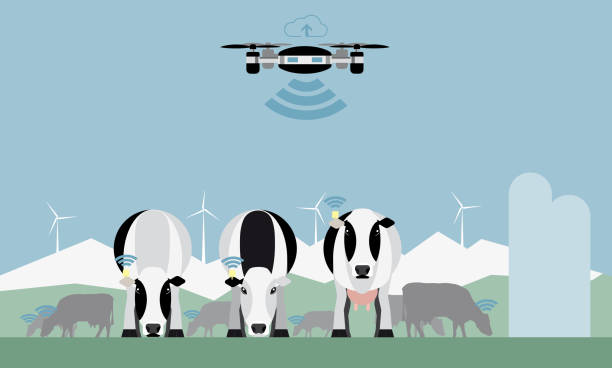
How Livestock Monitoring Drones Work
Livestock monitoring drones are specially designed UAVs equipped with cameras and sensors that capture high-resolution images and data from the air. These drones are programmed to follow predetermined flight paths, providing a comprehensive aerial view of the livestock and their environment.
Applications in Agriculture
- Herd Management: Livestock monitoring drones enable farmers to quickly and efficiently survey their herds. They can identify potential issues such as sick or injured animals, distressed behavior, or animals that have strayed from the herd.
- Pasture Assessment: Drones provide valuable insights into pasture conditions, helping farmers assess grass quality, quantity, and availability. This information aids in determining when and where to rotate livestock for optimal grazing.
- Livestock Counting: Accurate counting of livestock is essential for inventory management. Drones can swiftly count and track animals in large herds, reducing the time and effort required for manual counting.
- Fencing and Infrastructure Inspection: Aerial views allow farmers to inspect fences, water troughs, and other infrastructure elements, ensuring they are in good condition and facilitating timely repairs.
- Predator Detection: Drones can be used to monitor for potential threats from predators such as wolves or coyotes, allowing farmers to take proactive measures to protect their livestock.
Advantages of Livestock Monitoring Drones in Agriculture
- Efficiency: These drones cover large areas quickly, reducing the time and labor required for manual inspections.
- Timely Intervention: Early detection of health issues or distressed behavior allows farmers to provide prompt care to sick or injured animals.
- Improved Grazing Management: Aerial insights help farmers optimize grazing patterns, promoting healthier pastures and more efficient resource use.
- Data-Driven Decisions: The data collected by livestock monitoring drones empowers farmers to make informed decisions about herd health and management.
Livestock monitoring drones have become essential tools in modern livestock farming. Their ability to provide real-time aerial views of herds and pastures allows farmers to take proactive steps to ensure the well-being of their animals and optimize grazing practices. As technology continues to advance, these drones will play an increasingly vital role in the livestock industry, contributing to more efficient and responsible livestock management practices. They represent a significant component of the ongoing agricultural revolution, where technology meets tradition to ensure the health and productivity of livestock for a growing world population.
8. Weather Monitoring Drones
Weather Monitoring Drones: Aerial Insights for Agriculture’s Meteorological Needs
The agriculture industry is a field that undergoes constant change. Farmers must remain up-to-date with unpredictable weather patterns to ensure a worthy crop yield. Precision is key in adapting to the varying weather conditions. In order to aid farmers, weather monitoring drones have emerged as the latest high-flying meteorological tools that provide real-time data. This data allows farmers to make informed decisions that protect their crops and optimize their agricultural practices.
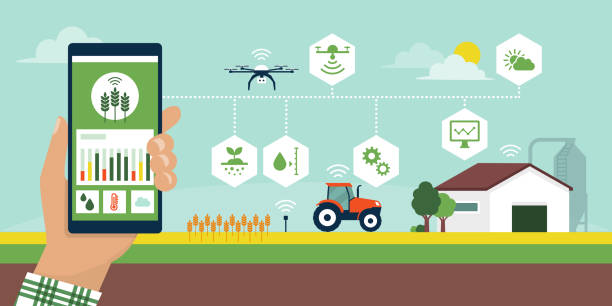
How Weather Monitoring Drones Work
Weather monitoring drones, also known as meteorological drones or atmospheric drones, are equipped with specialized sensors that measure a variety of atmospheric conditions. These drones are designed to fly at different altitudes, from ground level to high above the fields, to collect data on temperature, humidity, wind speed, wind direction, air pressure, and even precipitation.
Applications in Agriculture
- Real-Time Weather Data: Weather monitoring drones provide real-time data on current weather conditions. Farmers can access information on temperature, humidity, and wind patterns to make decisions about planting, harvesting, and irrigation.
- Frost Warning: Drones can detect temperature drops that may lead to frost formation. This early warning enables farmers to take preventative measures to protect sensitive crops from frost damage.
- Precipitation Monitoring: Monitoring drones can provide data on rainfall intensity and distribution. This information is crucial for managing irrigation systems and avoiding overwatering during rainy periods.
- Wind Analysis: Wind speed and direction data help farmers assess the risk of wind damage to crops and make decisions about pesticide or fertilizer application.
- Microclimate Mapping: Drones can capture data on temperature variations across fields, helping farmers identify microclimates within their farms. This information is valuable for planting specific crops in the most suitable locations.
Advantages of Weather Monitoring Drones in Agriculture
- Timely Decision-Making: Real-time weather data allows farmers to make informed decisions promptly, reducing the risk of weather-related crop losses.
- Precision Agriculture: Drones provide precise information on local weather conditions, enabling farmers to optimize their agricultural practices and resource use.
- Early Warning: Early detection of adverse weather conditions, such as frost, allows farmers to take preventive measures to protect their crops.
- Data-Driven Farming: The data collected by weather monitoring drones empowers farmers to practice data-driven farming, leading to more efficient and sustainable practices.
Weather monitoring drones have become indispensable tools in modern agriculture. Their ability to provide real-time meteorological data allows farmers to adapt to changing weather conditions swiftly. By making informed decisions about planting, irrigation, and crop protection, farmers can minimize risks and optimize their yields. As technology continues to advance, these drones will play an increasingly vital role in ensuring food security and sustainable farming practices in a world where weather patterns are becoming increasingly unpredictable. They are an integral part of the ongoing agricultural revolution, where precision and data are essential for success.
9. Crop Dusting Drones
Crop Dusting Drones: Precision Agriculture Takes Flight
The agriculture industry is in a constant state of evolution, with limitless opportunities for innovation. A recent breakthrough that has transformed farming is the use of crop dusting drones. These aerial machines have revolutionized crop protection and management, offering unprecedented levels of precision, efficiency, and environmental responsibility.
How Crop Dusting Drones Work
Crop dusting drones, also known as agricultural drones or UAV crop dusters, are specifically designed for pesticide and fertilizer applications. They are equipped with tanks for liquid or granular substances, powerful propellers, and a precision sprayer system. These drones can be programmed to follow precise flight paths, ensuring even distribution of substances over the targeted areas.
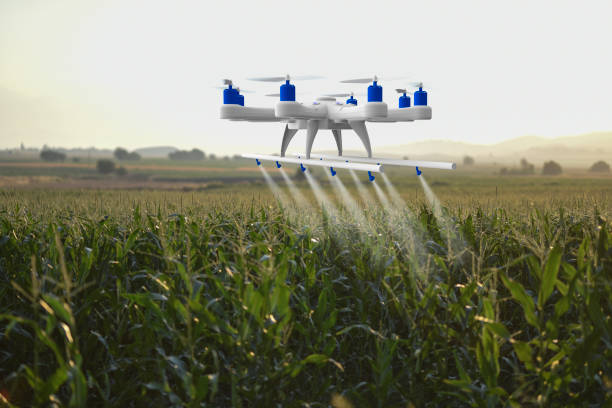
Applications in Agriculture
- Pesticide Application: Crop dusting drones are employed to apply pesticides with unparalleled accuracy. They can target specific areas of a field, reducing chemical usage, minimizing environmental impact, and ensuring healthier crops.
- Fertilizer Application: These drones excel at precise fertilizer application. Farmers can customize nutrient distribution based on soil and crop needs, leading to optimized plant growth and resource use.
- Weed Control: Crop dusting drones can be programmed to target weed-infested areas, minimizing the need for herbicides and reducing the impact on non-target plants.
- Disease Management: In cases of crop diseases, these drones can deliver targeted treatments, minimizing the spread of infections and preserving crop health.
- Frost Protection: Some crop dusting drones are equipped with anti-frost capabilities. They can disperse substances that protect crops from frost damage, reducing the risk of crop loss during cold spells.
Advantages of Crop Dusting Drones in Agriculture
- Precision: These drones offer pinpoint accuracy, reducing the risk of chemical drift and ensuring substances are applied exactly where needed.
- Efficiency: Crop dusting drones can cover large areas quickly, reducing the time and labor required for traditional crop protection methods.
- Environmental Responsibility: By minimizing chemical usage and drift, these drones contribute to more environmentally responsible farming practices.
- Cost Savings: Over time, the precision and efficiency of crop dusting drones can lead to cost savings for farmers.
Crop dusting drones have transformed the landscape of precision agriculture by offering unparalleled accuracy and efficiency in pesticide and fertilizer application. By reducing chemical usage, minimizing environmental impact, and optimizing resource allocation, these drones enable farmers to protect their crops while promoting sustainability and responsible farming practices. As technology continues to advance, crop dusting drones will play an increasingly vital role in ensuring food security and sustainable agriculture in a world where efficient resource management is essential. They are a testament to the ongoing agricultural revolution, where innovation meets tradition to cultivate a brighter future.
10. Payload Delivery Drones
Payload Delivery Drones: Revolutionizing Logistics in Agriculture
Technological progressions are continuously altering the agricultural sector, and the latest innovation causing a considerable impact is the utilization of payload delivery drones. These aerial devices are revolutionizing the management of logistics and supply chains in agriculture. Farmers are now offered a faster and more efficient method of transporting crucial materials, equipment, and agricultural products across their extensive properties.
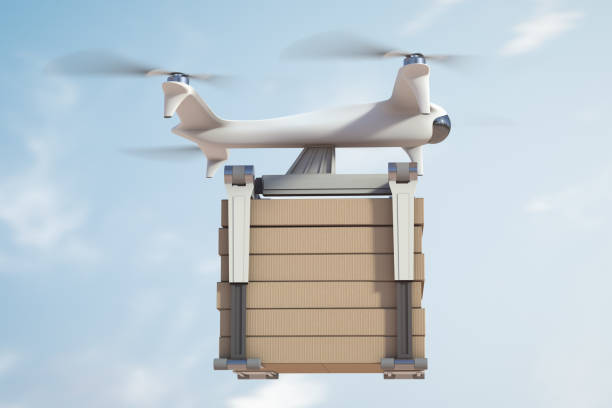
How Payload Delivery Drones Work
Payload delivery drones are specialized unmanned aerial vehicles (UAVs) equipped with cargo bays or compartments designed to carry payloads. These drones are programmed with GPS coordinates and can be remotely operated to transport materials from one location to another within a farm or agricultural facility.
Applications in Agriculture
- Supply Transport: Payload delivery drones are used to transport crucial supplies such as seeds, fertilizers, pesticides, and tools to remote or hard-to-reach areas of a farm. This ensures that resources are readily available where and when they are needed.
- Emergency Medical Supplies: In cases of accidents or medical emergencies on large farms, these drones can swiftly deliver essential medical supplies or first-aid kits to the scene, potentially saving lives.
- Sample Collection: Payload drones can be employed to collect soil samples, plant samples, or even water samples from different parts of a farm, providing valuable data for analysis and decision-making.
- Product Transport: In some cases, payload delivery drones are used to transport harvested crops or other agricultural products from the fields to storage facilities, reducing manual labor and transportation time.
- Livestock Feed Delivery: On farms with extensive grazing areas, drones can deliver livestock feed to ensure animals receive timely and adequate nutrition.
Advantages of Payload Delivery Drones in Agriculture
- Efficiency: These drones can quickly transport payloads across large distances, saving time and labor.
- Accessibility: Payload drones can reach remote or difficult-to-access areas of a farm, ensuring that resources and supplies are distributed evenly.
- Cost Savings: They reduce the need for manual transportation of materials and can potentially lower operational costs.
- Precision: Payload delivery drones can drop supplies or payloads with precision, ensuring accurate placement.
Payload delivery drones have emerged as invaluable tools in modern agriculture, enhancing logistics and resource management. Their ability to swiftly transport supplies, materials, and even agricultural products across vast agricultural properties is revolutionizing the way farmers operate. As technology continues to advance, these drones will play an increasingly pivotal role in improving efficiency, reducing costs, and ensuring timely access to essential resources on farms. They are a testament to the ongoing agricultural revolution, where innovation and technology continue to drive progress and productivity in farming practices.
Benefits of Agricultural Drones
The adoption of agricultural drones brings forth a multitude of benefits, including:
Increased Efficiency: Drones can cover large areas quickly, reducing the time and manpower required for traditional tasks.
Precision Farming: Drones enable precise crop monitoring and management, leading to higher yields and reduced resource wastage.
Cost Reduction: With improved data collection and targeted treatments, farmers can reduce input costs while maximizing output.
Environmental Sustainability: Reduced chemical usage and efficient resource allocation contribute to more environmentally friendly farming practices.
Data-Driven Decisions: The wealth of data collected by drones empowers farmers to make data-driven decisions for better crop management.
Conclusion
As we embrace the agricultural revolution driven by technology, drones have emerged as indispensable tools for modern farming. These 10 types of drones are transforming the way we cultivate and manage crops, ushering in an era of precision agriculture that promises increased yields, reduced environmental impact, and sustainable farming practices. Embracing these innovations is not just a choice but a necessity to meet the demands of a growing global population while preserving our planet’s resources. Welcome to the future of farming, where the sky is no longer the limit.
Read, Also >>>>>> A Step-by-Step Guide On How To Boost Your Crop Yields with Drone Spraying

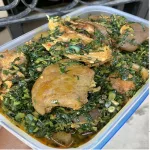

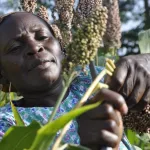

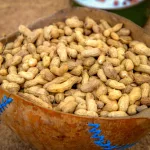
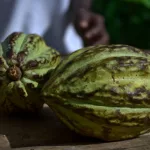
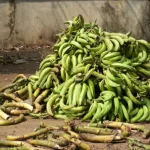

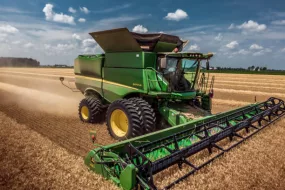


3 replies on “Exploring 10 Types of Drones That Are Transforming Farming And Revolutionizing Agriculture”
Please comment And share this post…
[…] Drones, also known as Unmanned Aerial Vehicles (UAVs), have become indispensable tools on modern farms. Equipped with high-resolution cameras and sophisticated sensors, drones can provide an aerial perspective that was previously unimaginable. When it comes to livestock counting and management, drones offer several advantages: […]
[…] READ, ALSO >>>>> Exploring 10 Types of Drones That Are Transforming Farming And Revolutionizing Agriculture […]